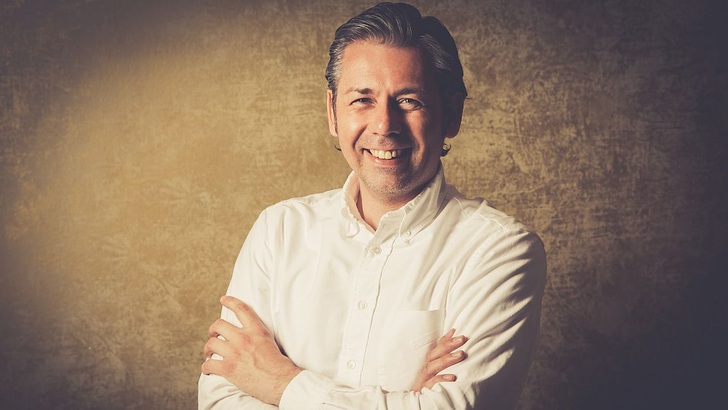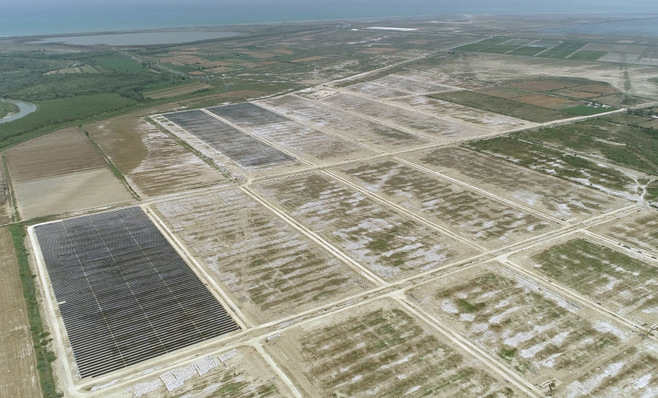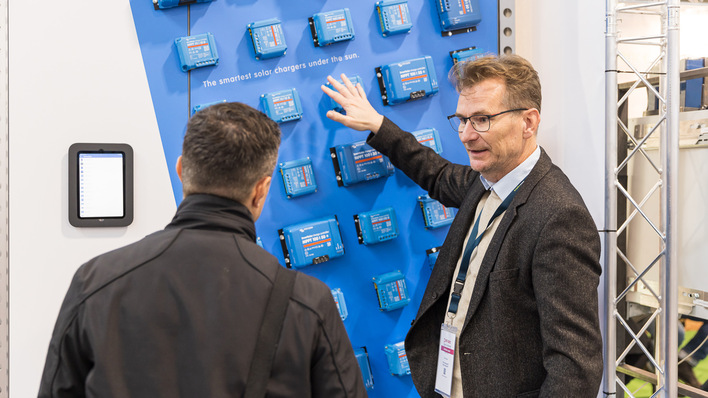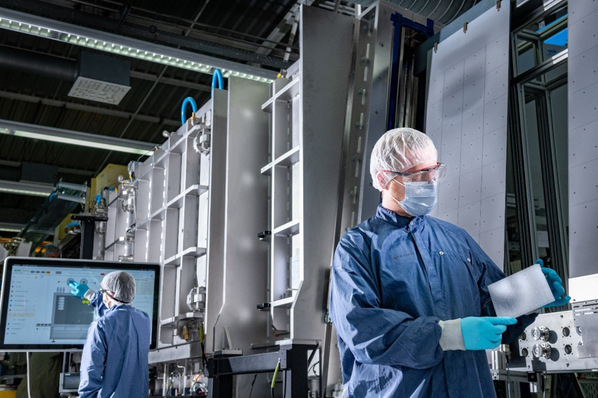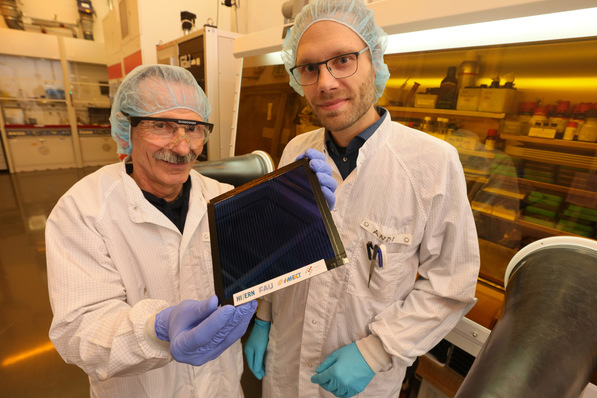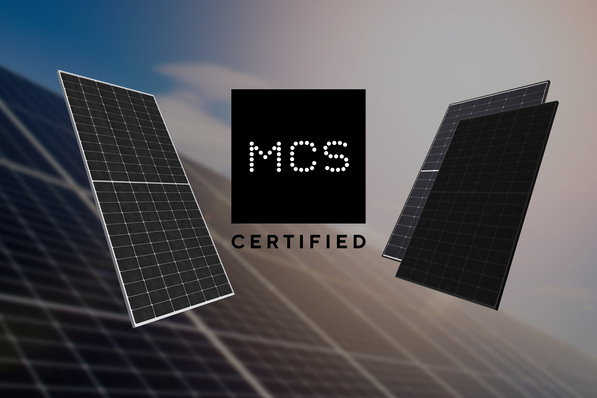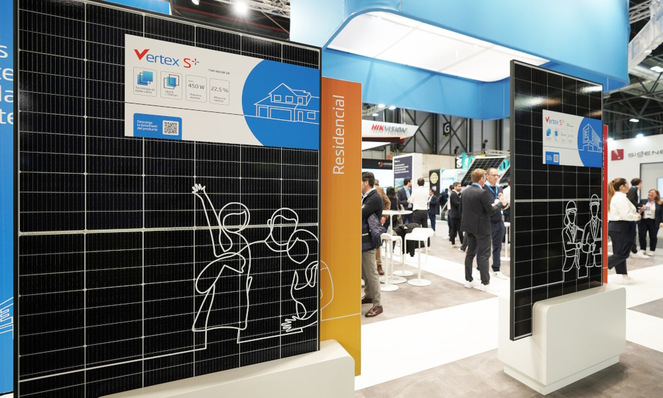How has the solar panel business been doing at Luxor Solar?
Thomas Dessoi: We have been in the market for 13 years, and now the trust our customers have placed in us is paying off. In the first quarter of 2017, we had 25 percent more orders than the same period last year, which clearly puts us ahead of schedule. Installing companies are appreciating our extensive product range. They also value that we are a medium-sized business run by the owners – just like most of them as well as the project managing firms are themselves. We not only see ourselves as the supplier of our customers, but as their partner.
What types of panels do you offer to your customers?
Luxor Solar offers the proper panel for any possible application. We make a general distinction between three lines of products: Eco Line and Secure Line (both for on-grid operation) as well as Solo Line (for off-grid applications). The majority of our volume is in the Eco Line. This includes not only the classic 60-cell panels in mono, mono-full-black and poly versions, but also panels of more compact non-standard dimensions. These allow the installing company to make the most efficient use of any given roof space. 60-cell panels are not always suitable for getting the most out of a roof, which is where 48- and 72-cell panels as well as the 5-inch cell matrix come in. Measuring 1,320 by 992 by 35 millimetres. Our 48-cell panel made up of polycrystalline cells has an almost square outline and produces 215 watts.
Is it possible to mount several modules in one PV string?
Under certain conditions, our 48-cell and 60-cell polycrystalline panels can even be combined. The 72-cell panels measuring 1,580 by 808 by 35 millimetres have been on the market for a very long time and we are now globally one of a few major manufacturers that still produce a panel in these dimensions. And we also offer large-scale panels with 72 six-inch cells for project applications – as either a monocrystalline version with up to 360 Wp or a polycrystalline version with up to 330 Wp. Especially regarding the BOS costs, our 72-cell panels with six-inch cells are the ideal product from the perspective of project developers and investors. Furthermore, using large 72-cell panels has been shown to reduce maintenance costs over the service life compared to similar 60-cell panels.
In some European markets, smart panels are becoming increasingly important. Are you offering anything along those lines?
Yes, we have smart panels on offer. They work based on electronics by Solaredge or Tigo, directly integrated into the connector sockets. They are available in the Eco Smart Line as polycrystalline 60-cell panels with up to 270 Wp and also, brand new, as a 60-cell monocrystalline full-black version with up to 290 Wp. We see an increasing demand for such smart panels, especially in areas where high performance matters. We are happy to stay abreast of that. The advantages of optimised, i.e. smart, panels are plain to see: MPP tracking as well as panel-specific monitoring, but also the possibility for isolation are just a few of them.
How important are glass-glass panels for what you do?
Very important. The products of our Secure Line are seeing significantly higher demand. In France, we have recently supplied a project volume of 1.2 megawatts in Luxor Secure Line 60 Mono transparent edition panels through our distribution partner Krannich Solar. The investor chose Luxor because of the excellent properties of our glass-glass panels. The deciding factor for them was that Luxor had adapted their glass-making expertise to the design and production phase of the panel. A specialised production process, similar to what is used for making car windshields, results in excellent characteristics of the product and gives the operator of the installation the highest degree of security.
Can you explain further details, please?
On the one hand, as it has thermoplastically sealed panel edges all around, the Secure Line has a panel perimeter that is 100 percent waterproof. On the other hand, the connector leads are introduced to the connection socket in a very specialised way, without penetrating either the material embedding the cells or the back glass. Furthermore, we use PVB as the embedding material, rather than the more common EVA. Compared to EVA, PVB has a higher transmission factor, allowing the transmission of 20 percent of the optical spectrum, thereby increasing the efficiency of the cell by 4 percent. And by using PVB, the range at which the panel starts generating begins at 280 nanometres, compared to 350 nanometres when using standard EVA. PVB also absorbs harmful UVA and UVB rays, which significantly reduces the aging of the cells. All of these factors result in steady and excellent performance of the panels.
How long do they operate?
We prove this with our 30-year warranty – both on the product itself and linearly on its performance. The panel comes framed, but on request we also provide a non-framed version. Our latest highlight is the Luxor Secure Smart Line: A glass-glass panel with Solaredge electronics integrated into the connection socket.
What distribution channels do you employ to sell your panels?
In Germany, we go through a number of channels. Our most important partners are the installing companies, which we have access to through the two wholesalers Krannich Solar near Stuttgart and EWS in Handewitt – both partners of long standing. We distribute directly to EPCs, utilities, trading partners and investors. The same is true for the projects segment.
How is the turnover spread out across different regions?
About half of our sales volume goes to German-speaking countries, although that includes the international projects of our customers here. The other half goes to the rest of Europe as well as to non-European countries and farther afield. Luxor Solar is already active in 45 countries, with branch offices in California and Tokio. In Japan, we have just supplied a 15.5 MW project. Japan and the US are very interesting markets for us.
What will this year bring for you?
For 2017, we foresee significant accumulated growth across all markets and our entire product range. Well, for Germany the major driver will be the fact that installations up to 750 kilowatts can be built without going through a tendering process. Our business in the segment for installations of up to 10 kilowatts continues to out-perform the market in general: Our volume increases year on year. An important field will also be in specific projects, where we are among others benefitting from an increased involvement of German project developers in Europe, Sub-Saharan Africa as well as the MENA region. For us, the next highlight will be the Intersolar. We will be present there and look forward to having interesting encounters at our booth A1.290
Interviewed by Heiko Schwarzburger
Stay informed, get our newsletter twice a week. Register here: http://www.pveurope.eu/Newsletter
Related news:
http://www.pveurope.eu/Products/Solar-Generator/Solar-modules

